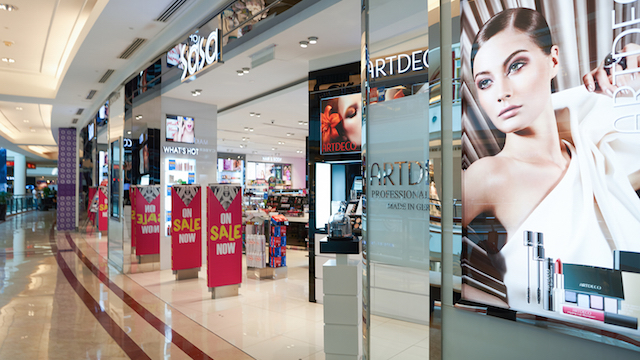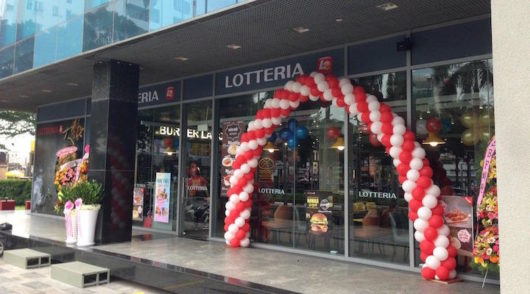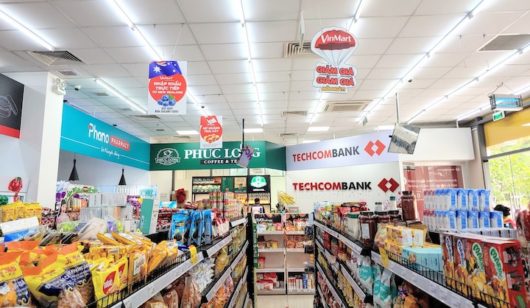Cosmetics retail chain Sa Sa International Holdings recorded a 12.8 per cent drop in turnover for its latest fiscal year, ended March 31, sliding to HK$7845.9 million (US$1011.4 million) from HK$8992.8 million.
Retail sales in Hong Kong and Macau fell 14.2 per cent year-on-year to HK$6231.6 million, and overall profit slid 54.3 per cent to HK$383.5 million from HK$838.8 million.
Sa Sa has traditionally relied on high-price products with long product life cycles mainly from Europe and the US, but the rise of cross-border eCommerce has given further impetus to the change in tourist flows and in tourist buying patterns, says the company. This has led to faster market penetration by cheaper Korean products.
To address this challenge, the group has improved the cost effectiveness of stores, repositioned and rationalised its store portfolio, optimised store sizes and centralised operations. It has also improved the management of stores in its markets beyond Hong Kong.
In Hong Kong and Macau, same-store sales fell 11.8 per cent during the year. Transaction numbers dropped by 4.4 per cent while the total average sales value per ticket decreased by 10.2 per cent.
Transactions by mainland China tourists fell 7.1 per cent while average sales value per ticket decreased by 11.2 per cent. For transactions by local consumers, the figures were down 1.2 per cent and 3.5 per cent respectively.
Profitability hit
Because of ongoing promotions and discounting to support sales in a slower market, as well as a lower house-brand mix, the group’s profitability was dragged down. The gross profit margin decreased from 44.8 per cent the previous year to 42.6 per cent, while net profit margin fell to 7.4 per cent from 11.9 per cent.
To strengthen the competitiveness of its product offerings, the group adjusted its non-house brand mix in some popular product categories for a faster adaptation to changing consumer preferences.
During the year, Sa Sa stores increased by four, with a total as at March 31 of 111 Sasa stores and two single-brand stores or counters in Hong Kong and Macau.
In Mainland China, boutique stores continued to contribute to overall profitability, but a change of management led to a slight decrease in turnover as well as an increase in the inventory provision.
Overall turnover for the group on the mainland fell 9.6 per cent to HK$303.8 million, while same-store sales decreased by 9.9 per cent. This gave a loss for the year of HK$39.6 million.
The group launched O2O stores with new format in Shenzhen and Shanghai, broadening its product selection through online offerings while also increasing exposure for the Sasa.com brand.
Manpower constraints
Turnover for the Singapore market eased 2 per cent to HK$222.5 million while same-store sales dropped by 4.8 per cent – mainly the effect of Singapore’s acute manpower constraints which led to vacancies for frontline staff.
In Malaysia, the market grew 9.1 per cent to HK$307.4 million, though same-store sales eased by 3.2 per cent. The group says it has consistently outperformed the market and is profitable, despite its performance being briefly impacted by the introduction of the Goods and Services Tax (GST) at the beginning of the year.
Turnover in the group’s Taiwan business dropped 7.8 per cent to HK$254.6 million, and same-store sales fell by 10.1 per cent, mainly the result of management changes, weak local consumer sentiment and a drop in mainland tourist arrivals.
Turnover for Sasa.com rose 6.2 per cent to HK$442.0 million. The group launched a new Mainland China website and mobile site during the year, which enhanced the traffic and conversion rate. Also, the group’s performance was strengthened by more focus on flash sales.
Sales to the mainland market grew by 25.9 per cent, hindered by the limitations of the system’s scalability and logistics, together with inadequate consumer awareness of Sasa.com.
eCommerce focus
Sa Sa expects the Hong Kong retail market to still be a challenge, and in response has improved store management and instituted an O2O business model to tap the potential of cross-border eCommerce.
The group will continue its policy of store consolidation in Hong Kong with aggressive rental cuts targeted at tourist stores, or closures. It will also reposition stores to residential areas with better growth prospects and returns, as well as the New Territories districts near the mainland border.
With the continuous change in dynamics of the cosmetics market in China, with internet retailing growing rapidly, the group says it recognises the need to improve its management resources. It has appointed a new management team and recruited new staff while also seconding experienced staff from Hong Kong.
Sa Sa believes a new free-trade-zone warehouse in China will help it overcome high delivery costs and long fulfillment lead times.
Going forward, the group will place more emphasis on eCommerce and also gradually integrate its online and offline operations to increase competitiveness.






